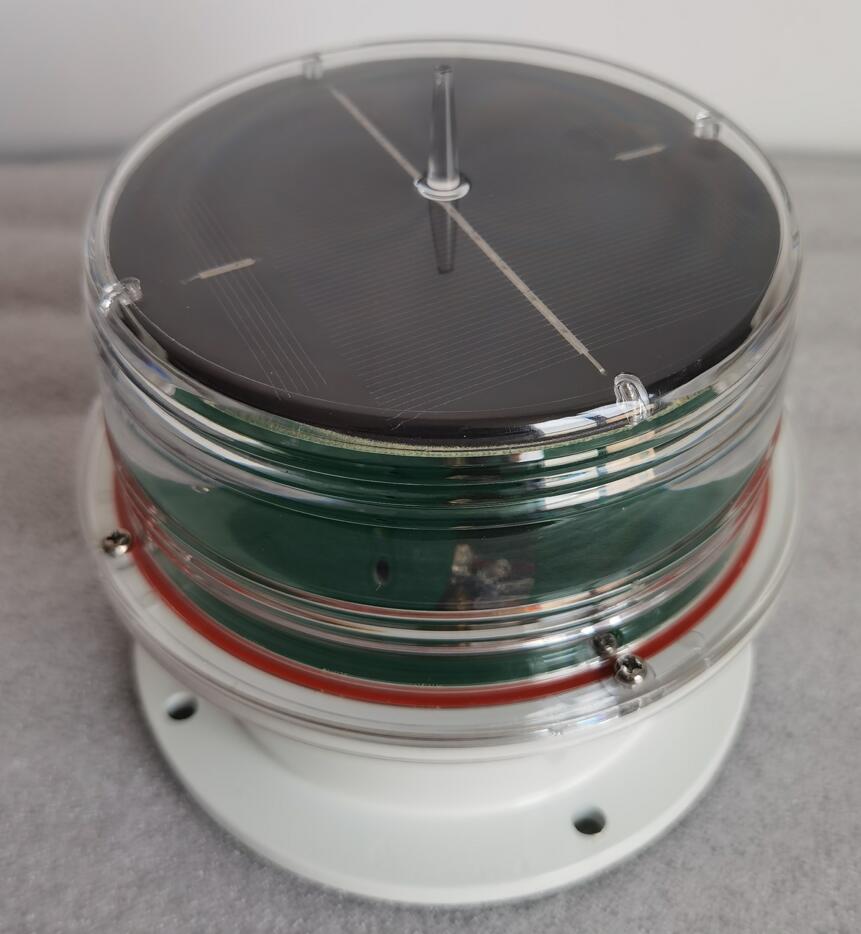
In modern aviation, visibility and safety are critical, especially in areas where traditional power sources may be limited or unreliable. The aircraft warning solar light has emerged as an innovative solution, combining safety functionality with environmental sustainability. By harnessing solar energy, these lights provide reliable and cost-effective illumination, ensuring the visibility of obstacles and structures in both daytime and nighttime operations.
What is an Aircraft Warning Solar Light?
An aircraft warning solar light is a solar-powered lighting system designed to mark tall structures, such as communication towers, wind turbines, and buildings, for aircraft navigation. These lights serve as a crucial safety feature by signaling the presence of potential hazards to pilots, particularly during low visibility conditions or nighttime flights.
Unlike traditional warning lights that rely on grid power, aircraft warning solar lights utilize photovoltaic panels to capture solar energy during the day, storing it in batteries for use at night. Their self-sufficient design allows them to operate in remote locations, making them an ideal choice for various applications.

Advantages of Aircraft Warning Solar Lights
The adoption of aircraft warning solar lights offers several advantages over conventional lighting systems, making them an increasingly popular choice in the aviation industry.
1. Energy Efficiency and Sustainability
Solar-powered lights harness renewable energy, significantly reducing the reliance on fossil fuels and grid electricity. This eco-friendly approach not only lowers carbon emissions but also aligns with global efforts to promote sustainable aviation practices.
2. Cost-Effectiveness
Once installed, aircraft warning solar lights require minimal operational costs. With no need for external power sources or extensive wiring, the initial investment is offset by long-term savings in energy and maintenance expenses.
| 45yu7 |
Aircraft Warning Solar Lights |
3. Versatility in Remote Locations
Aircraft warning solar lights are particularly beneficial in remote or off-grid areas where access to electricity is challenging. Whether installed on isolated communication towers or in areas with harsh weather conditions, these lights remain operational, ensuring consistent safety.
4. Low Maintenance
Modern solar lighting systems are built to withstand extreme weather conditions, such as heavy rain, snow, and high winds. With durable construction and long-lasting LED technology, these lights require minimal maintenance, reducing downtime and operational costs.
Key Features of Aircraft Warning Solar Lights
Aircraft warning solar lights are engineered with advanced technologies to ensure reliable performance. Some of the key features include:
Photovoltaic Panels: High-efficiency solar panels capture sunlight and convert it into electricity for storage.
Battery Storage: Advanced lithium-ion or lead-acid batteries store energy, enabling consistent operation during nighttime and cloudy conditions.
LED Technology: Energy-efficient LEDs provide bright, long-lasting illumination, ensuring visibility from great distances.
Automatic Control Systems: Sensors enable the lights to turn on automatically at dusk and off at dawn, optimizing energy usage.
Durable Design: Weatherproof and corrosion-resistant materials ensure durability in harsh environments.
Applications of Aircraft Warning Solar Lights
The versatility of aircraft warning solar lights makes them suitable for a wide range of applications:
Telecommunication Towers: These lights mark tall communication structures, ensuring they are visible to low-flying aircraft.
Wind Turbines: Installed on wind farms, solar lights enhance the safety of these towering structures for aviation.
Skyscrapers and High-Rise Buildings: Aircraft warning solar lights ensure that urban structures remain visible, particularly in densely populated areas.
Remote Airstrips: In off-grid areas, solar lights provide essential illumination for runways and surrounding structures.
Technological Advancements in Aircraft Warning Solar Lights
The field of solar lighting has seen significant advancements in recent years, leading to improvements in the performance and efficiency of aircraft warning solar lights.
1. Enhanced Battery Technology
Modern aircraft warning solar lights now feature advanced battery systems with improved storage capacities and longer lifespans. These batteries ensure uninterrupted operation, even during extended periods of poor sunlight.
2. Smarter Control Systems
Integration with smart control systems allows remote monitoring and operation of solar lights. Operators can track performance, receive alerts for maintenance needs, and adjust settings from centralized systems, enhancing efficiency.
3. Increased Efficiency in Solar Panels
Innovations in photovoltaic technology have led to higher energy conversion rates, enabling the lights to capture and store more energy even in low-light conditions.
Regulatory Compliance
Aircraft warning solar lights adhere to strict guidelines set by aviation regulatory bodies, such as the International Civil Aviation Organization (ICAO) and the Federal Aviation Administration (FAA). These organizations mandate specific standards regarding light intensity, color, and placement to ensure safety across global airspace.
For instance, ICAO recommends using red lights for structures less than 150 meters tall and white strobe lights for taller structures. Solar-powered systems are designed to meet these requirements while offering the added benefits of renewable energy.
Challenges and Considerations
While aircraft warning solar lights offer numerous benefits, there are challenges to consider:
Weather Dependency: Prolonged periods of overcast weather can impact solar energy collection, requiring robust battery systems to compensate.
Initial Installation Costs: Although operational costs are low, the initial investment in high-quality solar systems may be higher than traditional lights.
Vandalism and Theft: In remote areas, solar panels and batteries can be susceptible to theft or damage, necessitating protective measures.
The aircraft warning solar light represents a forward-thinking solution to aviation safety, combining reliable performance with environmental responsibility. By leveraging solar energy, these lights ensure the visibility of critical structures while reducing carbon footprints and operational costs. As technology continues to evolve, the capabilities and applications of aircraft warning solar lights are set to expand, making them a cornerstone of sustainable aviation practices.